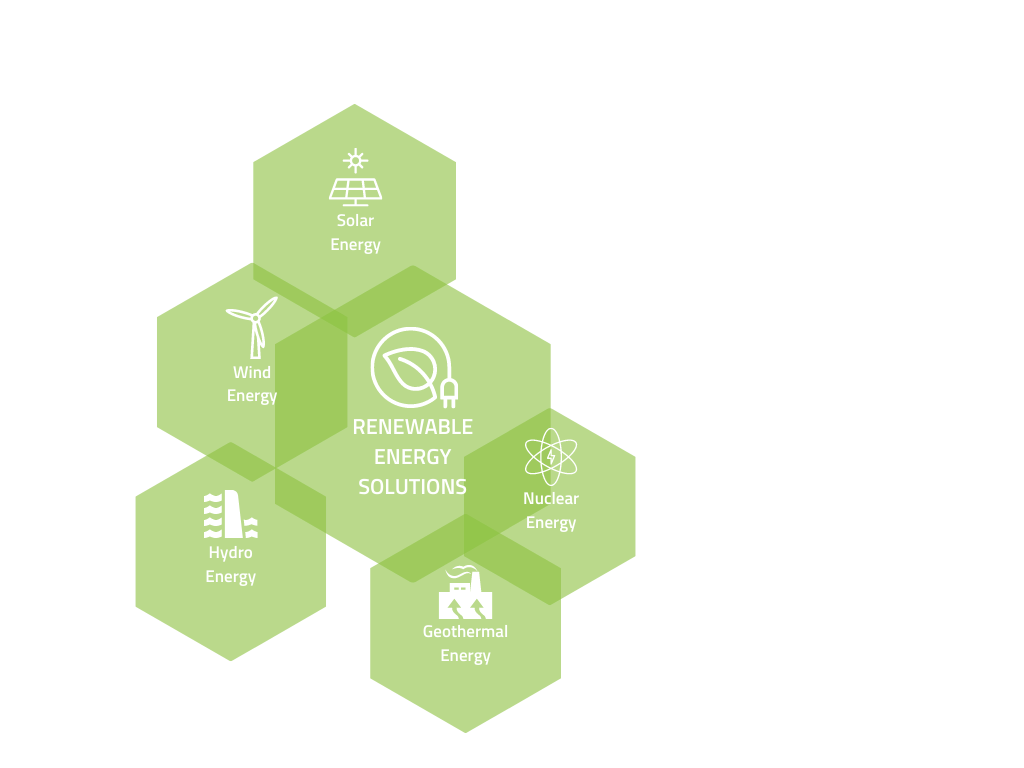Distributed Energy and Grid Systems Integration
Enabling resilient and secure deployment of distributed and renewable energy systems
We are building resilient power and energy systems with a sharp focus on cyber, physical security, and control systems.
Distributed Energy and Grid Systems Integration
The grid of the future is shaping up to be more adaptable to available supply as demand increases for reliability and resilience and more renewable energy integration.
Our current grid experiences variability in loads as demand for electricity changes. Renewable sources such as wind and solar are variable based on weather conditions. A number of advances will be critical for making the future grid renewable, reliable and resilient, minimizing brownouts and power surges and ensuring grid stability while cutting carbon emissions.
INL Distributed Energy and Grid Systems Integration expertise perform scientific research and engineering to enable development, design, control, integration, and deployment of assured distributed and renewable energy resources, microgrids, distribution and storage systems, and other power and water system technologies.
This work incorporates improving knowledge of new technologies to enable deployment decisions, determine future research needs and ultimately enable funding.
Capabilities

Modeling/Simulation
- Chroma 61860 grid emulator that can output single- or three-phase voltage and current
- Ability to simulate High Voltage Alternating Current (HVAC) and High Voltage Direct Current (HVDC) networks
- Cybersecurity simulation capabilities

Microgrid Testing & Demonstration
- 275 kW microgrid
- Three smart inverters, multiple string and microinverters
- Microgrid control and communications systems
- 165 kW of flexible load banks
- Smart home devices and circuit controls
- Gas generator, additional generation to include wind and concentrated solar
- 30 kW of PV, including 5 kW of flexible solar PV
335 kWh of storage

Electric Vehicles
- 60 kVA Regenerative Grid Simulator
- Custom LabVIEW host control and data acquisition
- Level 1, level 2, wireless and DC fast charging systems
- Smart grid-enabled EVSE
- 400 kVA of lab supply ranging from 120 V single phase to 480 V AC three-phase

Industrial Scale
- 61-mile, 138-kV dual-fed power loop
- Loop includes seven substations, and a control center
- State-of-the-art communications and instrumentation capabilities
- Portions of the power loop can be isolated and reconfigured for specialized testing
Technical Elements
Distributed Generation
Solar, wind, generators and geothermal
Storage
Li-ion, Flow Batteries, Advance Lead Acid, NiCd or NiMH.
Integration & Controls
Microgrid Testbed
Digital Real-Time Simulation
Cybersecurity & Authority to Operate (ATO)
Risk Management Framework
Distributed Generation
When choosing distributed generation resource options it is important to develop business use cases and economic analyses that carefully consider energy balance, resource characteristics and asset choices. Effective user requirement definition, systems planning and controls choices are critical to selecting the best options.
Energy Solutions
Idaho National Laboratory has the expertise and infrastructure to test numerous aspects of modern energy systems. Our experts perform simulations using real-world data and hardware. They test dynamic storage and load-balancing options using a renewable energy microgrid test bed. On-site electric vehicle testing and a full-scale power grid provide unmatched demonstration opportunities. Laboratory engineers are helping put these concepts into practice at U.S. military bases around the world.
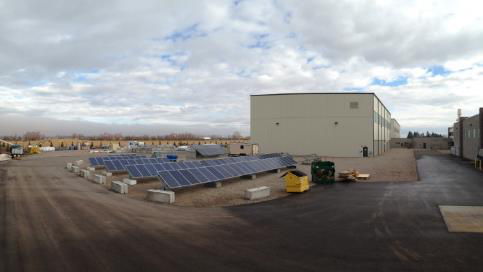
Real World Demonstrations
Military bases require reliable power with backup systems that can take over if the primary grid is interrupted. Diesel generators can provide such backup. However, as bases incorporate more renewable sources such as wind and solar, the resulting swings in usage can stress generators and shorten their life spans.
Such bases look to INL’s experts for solutions. The lab has expertise in renewable resource assessment, grid integration and resilient power systems. INL’s engineers are working towards moving those concepts from lab settings to real-world demonstrations.
To date, INL researchers have assisted in the development and integration of more than 1,000 MW of hybrid power, solar and wind energy systems at Department of Defense and industry/utility sites around the world.
In addition to experience and expertise developing and designing microgrids made up of renewable resources, INL has industrial-scale testing capabilities including a 138-kV isolatable dual-fed power loop.
Storage Solutions
Electric vehicle battery packs could prove to be optimal storage devices for energy produced when demand is light. As advanced vehicles become more widespread, they will add a growing and flexible component to the grid’s overall load. INL’s Electric Vehicle Infrastructure Laboratory is co-located with energy systems researchers, providing the ability to test how numerous plugged-in vehicles interact with the grid under different scenarios.
For utilities, flow batteries offer a tool for shaping load: storing excess electrical power during off-peak hours and releasing it during peak demand periods. Somewhat like a combination between a traditional battery and a fuel cell, flow batteries are well-suited to long use durations and more recharge/ discharge cycles.
INL has two Z20-4 Zinc/Iron flow batteries that together are capable of generating 128 kilowatts at full power for 2.5 hours. Integrated with the grid and microgrid, the data collected in real-world conditions will allow INL researchers to model and demonstrate energy use and storage scenarios.
Since usage and charging patterns impact a storage system’s performance and lifetime, INL studies a variety of large-scale energy storage systems (including flywheels and supercapacitors) to understand which is best suited to a particular scenario. The ideal combination of energy source and backup system depends on the electricity demands of each particular end user.
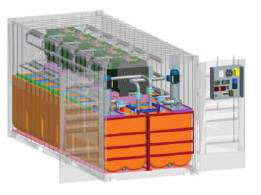
Integration & Controls
Microgrid Testbed
Microgrids are power distribution systems with distributed energy sources, storage devices and controllable loads. They can operate connected to the grid, but can disconnect and function as an independent island as needed.
The microgrid test bed at INL includes solar panels, energy storage devices, load banks, smart inverters, a power distribution system and multiple switchgear sets. It also includes “smart home” components such as appliances and other loads that can dynamically adjust their electricity demand.
A microgrid can be powered by distributed generators, batteries or renewable resources. Integrating several resources (i.e., wind and concentrated or photovoltaic solar) with the right storage option can result in a system of variable and controllable resources that is both flexible and manageable.
The system’s load control capabilities and grid interaction algorithms allow researchers to study demand response, peak shaving and ancillary services, and to test component interactions, performance, controls and integration challenges.
Digital Real-Time Simulation
Modeling and simulation provide powerful tools for rapid, cost-effective development and validation of new technologies, methods and devices before using them in the field. We have advanced capabilities for modeling the power grid and co-simulating electrical, thermal and mechanical systems.
Our digital real-time simulation racks can accommodate both power hardware and controller hardware in the simulation loop. Combined with a grid emulator and operational data from actual utilities, we can perform dynamic simulations using physical hardware and controllers. We have the ability to connect grid simulations in real time with the National Renewable Energy Laboratory in Golden, Colorado. The connection enables us to simulate scenarios that neither lab could perform on its own. Via our collaboration, we are studying how advanced vehicle charging stations could provide energy storage solutions for the grid of the future.

Cybersecurity / Authority to Operate & Risk Management Framework
Cyber-attacks on DoD Information Technology (IT) demonstrate the need for continuous vigilance and effective defensive measures. DoD Cyber Security teams follow Risk Management Framework (RMF) processes/guidance, develop plans identifying the goals, milestones and resources needed to identify, register, and implement cyber security controls on DoD facility-related control systems, and conduct routine cyber assessments and monitoring.
RMF Assessments
Assessment and Authorization Expertise
- Use of proven methodologies to evaluate systems and identify risks and missing security controls.
- Experienced in providing a variety of assessments from NIST’s SP 800-53 accreditation assessments to gap assessments of critical security controls.
- Provided training to various branches of armed forces including the ARMY & NAVY assessors on how to evaluate and assess all manner of systems.
- Built cybersecurity programs for critical infrastructure and various agencies.
- Reviewed and designed secure network architectures.
- Use of customized assessment tools to identify and document systems.
Control System Expertise
- Understand the risks and problems with implementing cybersecurity in control systems.
- Utilizes custom tools in analysis of control systems.
- Access to researchers in industrial cybersecurity working to solve current threats.
Close Associations with DoD, DHS, and critical infrastructure owners and operators.
- Solid relationships with all major branches of the armed forces.
- Staff understands the working environment of DoD projects.
Projects
Department of Defense (DOD)
The Department of Defense (DOD) has embraced renewable energy as essential not only to reducing dependence on foreign oil and addressing climate change concerns, but also to improving security and reducing costs. Idaho National Laboratory is working with DOD all over the United States and abroad, providing technical input and guidance for more than 25 projects.
Joint Region Marianas/Naval Base Guam
December 2014, U.S. Navy, Guam
Nature of Project: Solar, battery storage
Purpose of Project: Integration and eld-testing of utility-scale lithium-ion (Li-ion) battery storage and solar photovoltaic systems
INL Contribution: Design and testing of microgrid system
Naval Air Station North Island
November 2014, U.S. Navy, San Diego, Calif.
Nature of Project: Wind, battery storage
Purpose of Project: Feasibility planning and improvements to San Clemente Island power system
INL Contribution: Analysis and design of hybrid island/grid system improvements including three new 900-kW wind turbines
Naval Base Ventura County
October 2014, U.S. Navy, Oxnard, Calif.
Nature of Project: Wind, battery storage
Purpose of Project: Integration of wind energy and battery storage into San Nicolas Island power system
INL Contribution: Grid/system development and integration guidance of new 700-kW wind energy, and testing of potential zinc-bromine battery storage systems
Fleet Activities Sasebo
January 2015, U.S. Navy, Sasebo, Japan
Nature of Project: Wind
Purpose of Project: Development of rst wind energy project in Navy Far East region
INL Contribution: Feasibility assessment and design/development support for 2-5 MW of wind energy; other wind energy feasibility/development assessments
Vandenberg Air Force Base
January 2015, U.S. Air Force, Lompoc, Calif.
Nature of Project: Study Purpose of Project: Technical and investment planning on major projects affecting power/energy options and energy security
INL Contribution: Analysis of systems, technical and economic concerns, recommendations for improving power distribution and delivery
F.E. Warren Air Force Base
2005-2010, U.S. Air Force, Cheyenne, Wyo.
Nature of Project: Wind
Purpose of Project: Wind turbines expected to save the Air Force more than $3 amillion over the next 20 years
INL Contribution: Design and technical oversight, basic support for base interfaces, energy security test
Vandenberg Air Force Base
January 2015, U.S. Air Force, Lompoc, Calif.
Nature of Project: Study Purpose of Project: Technical and investment planning on major projects affecting power/energy options and energy security
INL Contribution: Analysis of systems, technical and economic concerns, recommendations for improving power distribution and delivery
F.E. Warren Air Force Base
2005-2010, U.S. Air Force, Cheyenne, Wyo.
Nature of Project: Wind
Purpose of Project: Wind turbines expected to save the Air Force more than $3 amillion over the next 20 years
INL Contribution: Design and technical oversight, basic support for base interfaces, energy security test
Tooele Army Depot
2015-2016, U.S. Army (AMC), Tooele, Utah
Nature of Project: Wind, solar, battery storage
Purpose of Project: Assist design review, planning and analysis for 1.7 and 1.5-MW wind project, 1.5-MW concentrated solar project upgrades, power system study and microgrid
INL Contribution: Interconnection and net metering agreements with utility, technical assistance, design review, and microgrid planning
Soto Cano Air Base
2014-2018, U.S. Army (IMCOM), Honduras
Nature of Project: Solar photovoltaic
Purpose of Project: Improve reliability of mission-critical loads by connecting generators on microgrid using existing distribution networks
INL Contribution: Technical consultation in development of solar energy project
Dugway Proving Ground
April-June 2015, U.S. Army (IMCOM), Dugway, Utah
Nature of Project: Solar
Purpose of Project: Identification of potential for solar photovoltaic, wind, geothermal, microgrid and energy storage systems
INL Contribution: Interconnection agreement with utility, design review and system integration for 2-MW solar photovoltaic project
Army Reserve
2015-2018, U.S. Army, American Samoa
Nature of Project: Solar
Purpose of Project: Improve reliability of mission-critical loads by connecting solar to existing distribution network
INL Contribution: Technical consultation in development of solar energy project
Atlantic Undersea Test and Evaluation Center (AUTEC)
June 2014, U.S. Navy, Andros Island, Bahamas
Nature of Project: Wind
Purpose of Project: 1-MW turbine installed in remote location to supplement four diesel generators, reducing costs and meeting clean energy requirements
INL Contribution: Consultation on control and system improvements
Utilities/Communities
Defense & Disaster Deployable Turbine
When conflicts and natural disasters unfold around the world and military or civil humanitarian response is needed, quick access to energy on location is critical to ensuring a successful mission of crisis response. The U.S. Department of Energy’s (DOE’s) Defense and Disaster Deployable Turbine (D3T) project is evaluating the market potential for rapidly deployable wind energy technologies, developing wind turbine design requirements for operational applications, and assessing commercially available wind technologies against operational design requirements to help identify technology gaps and research and development opportunities.
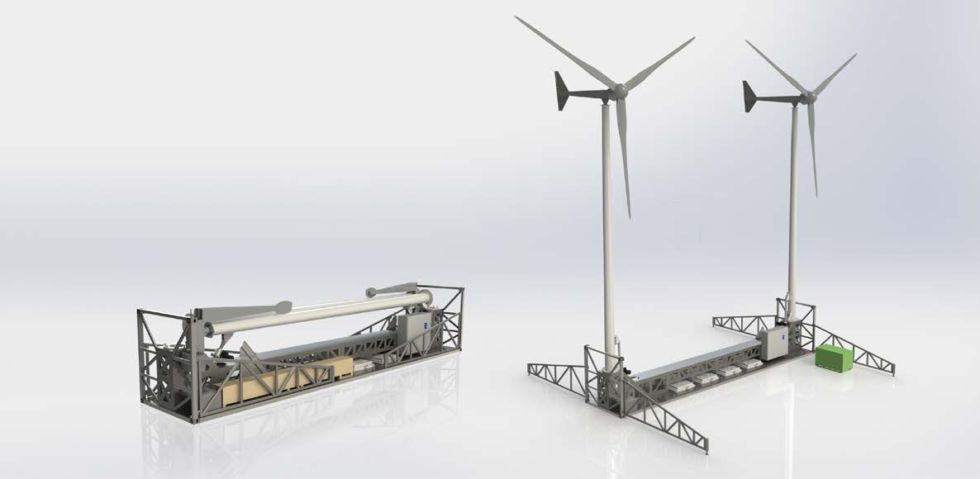
Developing High-Value Wind Technology to aid Humanitarian Crisis Response
The U.S. military conducts a wide range of missions throughout the world, including humanitarian crisis response. These missions depend on reliable access to liquid fuel sourced through a complex global logistics system. Generating power on location with wind technology can reduce the risk of disruption or attack during fuel transport and enhance mission reach by diversifying energy sources.
The D3T project collaborates directly with military and industry stakeholders to inform the development of deployable wind energy technologies. Commercially available wind turbines have been optimized to provide cost- effective, reliable energy over multiple decades in civilian applications at locations assessed for quality wind resources.
However, natural disasters and human conflicts can occur anywhere in the world and do not always transpire in well-studied locations that possess good-quality wind resources. Moreover, the operations responding to these events typically last only a few weeks to a few years.
Because it is unlikely that existing wind turbine products are optimized for these types of applications, the D3T project seeks to identify key design drivers to develop a more optimal deployable turbine concept that meets these specific needs.
Department of Energy (DOE)
Pantex Wind Project
In north Texas, INL has provided development, design and implementation support for the Pantex Wind Project, the largest federally owned wind project to date. The 11.5-MW project supplies more than half of the Energy Department facility’s electrical power.

Looking Ahead
Secure Embedded Intelligence (SEI) – Digital Twinning
Secure embedded intelligence (SEI) will make reactors more secure, more cost-effective and better able to handle the complexities of the modern power grid. SEI relies on the system’s ability to catalogue information from dozens of sensors and to learn from its operational past.
Researchers at Idaho National Laboratory are developing augmented digital twins of embedded smart systems. Augmentation of the digital twin involves the creation of monitoring, control and supervision modules that are digitally assisted and enhanced via artificial intelligence. Those modules facilitate flexible operation, autonomous operation and predictive maintenance.
Predictive maintenance with a digital twin relies on intelligent modules that continuously check the health of individual components, structures and systems. The digital twin could compute, for instance, the remaining useful life of a component and notify the operator when it really needs to be replaced instead of relying on a predetermined maintenance schedule.
One of the biggest benefits of an augmented digital twin is the ability to improve safeguards, security and safety because they use SEI to create a multilayered security system.
Microreactor Applications Research, Validation and Evaluation (MARVEL)
Led by Idaho National Laboratory (INL), the MARVEL program conducts both fundamental and applied R&D to reduce the risks associated with new technology performance and manufacturing readiness of microreactors. The intent of the program is to ensure that microreactor concepts can be licensed and deployed by commercial entities to meet specific use case requirements. The program will also support R&D specific to certain reactor technologies to ensure relevancy and address the needs of commercial developers.
This includes construction of the MARVEL nuclear test bed to provide a unique nuclear environment for validating autonomous operation regimes and demonstrating integration of end-user applications to an actual nuclear system. The program includes the rapid development of a 100 kWth/20 kWe microreactor planned for availability in FY22 which will provide a platform to perform R&D for improved integration of microreactors to end-user applications.
Our Team
Kurt Myers
Renewable Electric and Grid Integration Market Area Lead, Project Manager, and Staff Electrical Engineer
Porter Hill
Electrical Engineer
Jason Bush
Cyber Security & Electrical Engineer
Justin Welch
Systems Engineer, Energy and Grid System Integration
Kunal Thaker
Senior Resilient Energy Systems Manager
Ryan Davis
Mechanical Engineer
Michael Shurtliff
Frequently Asked Questions (FAQ)
What is a microgrid?
A Microgrid is an integrated energy system consisting of distributed generators, energy storage, and/or flexible loads which operates as a single, autonomous grid either in parallel to or islanded from an upstream utility or other power grid.
Why is it important?
Due to increased needs for energy security and resiliency of power supply, end consumers are more concerned with power quality and reliability in recent years.
How can microgrids help?
Supplying power to critical infrastructures such as hospitals, military bases, data centers, and communication infrastructures during upstream grid outages by operating in islanded mode, providing other services while in grid-connected mode, microgrids help realize optimal use of distributed energy resources.
What are other benefits?
Optimally manage distributed generations, energy storage systems, and responsive loads in both normal as well as abnormal operating conditions. During normal operating conditions for either grid connected or islanded, energy efficiency and economic operations are typical considerations. However, during abnormal operating conditions and transitions, technical aspects such as stability, resiliency, and energy security become primary concerns.
What is a Flow Battery?
A flow battery is a type of rechargeable battery in which the battery stacks circulate two sets of chemical components dissolved in liquid electrolytes contained within the system. The two electrolytes are separated by a membrane within the stack, and ion exchange across this membrane creates the flow of electric current while both liquids circulate in their own respective spaces. Unlike a traditional electrochemical cell, the ionic solution (electrolyte) is not stored in the cell around the electrodes. Rather, the ionic solution is stored outside of the cell and can be fed into the cell to generate electricity.
How are Flow Batteries recharged?
Flow batteries can be rapidly recharged by replacing the electrolyte liquid while simultaneously recovering the spent material for re-energization. They can tolerate more discharge-recharge cycling, and they require fewer safety and security precautions than many other battery technologies. High-tech membranes, pumps and seals, variable frequency drives, and advanced software and control systems have brought greater efficiencies at lower expense, making flow batteries a feasible alternative to lithium-ion storage systems.
What Can Flow Batteries Do?
Although zinc-iron flow batteries have been through some levels of field testing, the flow batteries at INL represent the first time in the U.S. that they are being incorporated and tested in a fully integrated and functional microgrid system, including real-world grid interaction use cases. This addition allows researchers to study how the microgrid can provide a more cost-effective and reliable power system. The input data from the microgrid is sent to INL’s Digital Real-Time Simulator (DRTS), where research engineers can simulate how multiple flow batteries combined with other distributed generation sources (such as renewables and other generators) can be used to add resiliency and stabilize a much larger grid.
Collaborate with Us
The Distributed Energy and Grid Systems Integration Grand Challenge facilitates technical discussions between the energy industry, the U.S. Department of Defense, and other federal agency stakeholders to define energy needs and identify purpose-driven technology solutions.
Contact us to provide input or collaborate on the following topics:
- Technical specifications for deployable energy concepts, prototypes, and commercial products, along with any data on fielded systems in defense or disaster response applications.
- Performance specifications for energy systems to support defense operational energy needs, especially soldier and basing energy needs.
- Collaborative opportunities to develop optimal deployable energy systems from research and development through testing and evaluation, as well as fielding systems in an operational environment.
